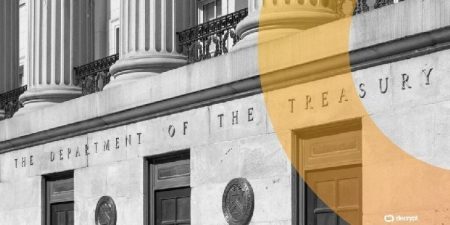Substance Over Spectacle: Why Web3 Must Prioritize Product Clarity for True Adoption
The Hype Trap: How Web3’s Community Obsession Is Undermining Growth
In the rapidly evolving landscape of Web3 technology, a troubling pattern has emerged that threatens the sector’s long-term viability. Scroll through Crypto Twitter for even ten minutes and you’ll encounter the same voices dominating Space discussions, expounding on “community” with passionate conviction while leaving the actual products they represent frustratingly undefined. This phenomenon isn’t merely an annoying quirk of the ecosystem—it represents a fundamental misalignment of priorities that could stall Web3’s progress just as it approaches mainstream consideration.
“If a newcomer to crypto can’t explain the project after hearing about it for a whole week, it wasn’t marketed; it was just socialized,” notes industry observers watching this trend unfold across projects large and small. The cryptocurrency and blockchain space has increasingly traded substance for style, prioritizing personality-driven engagement over product clarity. While marketing budgets flow liberally into flashy launch events, celebrity collaborations, and social media blitzes, the foundational elements that drive actual adoption—comprehensive documentation, intuitive onboarding processes, educational resources, and clear use cases—languish in development backlogs, underfunded and overlooked.
This misplaced focus stems partly from the industry’s obsession with metrics that look impressive in investor presentations but fail to translate into meaningful user engagement. Projects proudly showcase Twitter impressions, Discord member counts, and conference attendance figures while carefully avoiding more telling metrics like daily active users, retention rates, or completed transactions. A comprehensive review conducted in July revealed this precise pattern: activity spikes often mask weak fundamentals, with initial user enthusiasm rapidly dissipating without continued marketing stimulus. Even at the enterprise level, where more rigorous evaluation might be expected, the discourse rarely advances beyond superficial engagement metrics to substantive utility assessment—though this may be changing, with nearly 25% of finance leaders now expecting their organizations to incorporate digital currency use within the next two years.
From Popularity to Proof: The New Currency of Trust in Web3
The era of taking Web3 projects at face value based on community size or celebrity endorsements is rapidly drawing to a close. As market participants become more sophisticated and institutional involvement increases, the demand for verifiable performance metrics has never been higher. Projects seeking sustainable growth must shift their focus toward transparency—a quality that remains disappointingly rare in an industry built on the promise of open, auditable systems.
This shift begins with making products legible again. Technical complexity may be unavoidable in blockchain architecture, but the value proposition and user benefits should be expressible in plain language that resonates with intended audiences. One-page explanations that strip away jargon in favor of clarity should become standard practice. Every marketing communication should answer fundamental questions: What does this product do? Why does anyone need it? How does it work in practical terms? What are the risks and tradeoffs? What specific problems does it solve? And most importantly, how can potential users see it in action through simple, replicable demonstrations?
With clarity established, the next imperative is verification. Projects must prioritize comprehensive security audits, transparent reporting of on-chain usage patterns, and authentic user testimonials that connect to measurable outcomes. By naming common adoption barriers and explaining how their products overcome these obstacles, teams can build credibility that marketing hyperbole cannot achieve. Experience has repeatedly shown that projects publicly sharing code audits and verifiable user statistics develop stronger trust relationships with their communities. This approach represents a fundamental reorientation from hype-driven marketing toward evidence-based engagement—a shift that correlates strongly with sustained growth rather than the boom-and-bust cycles that have characterized much of the industry’s history to date.
Education Over Excitement: Building Understanding-First Communities
The most successful creators in the Web3 space have discovered an essential truth: teaching outperforms cheerleading every time. Comprehensive product briefs that cover the what, why, and how of a project, culminating in clear calls to action, consistently generate higher-quality engagement than emotionally charged but informationally vacant promotional material. Projects that prioritize helping users understand and utilize their offerings naturally generate excitement through demonstrated value rather than manufactured hype.
This educational approach requires disciplined attribution of marketing efforts to verifiable on-chain actions. While attribution in permissionless markets presents unique challenges, focusing on narrowly defined verified actions provides a reliable foundation for marketing narratives and expenditure justification. The guiding principle here is straightforward: if a team cannot explain the value of actions targeted by their marketing strategy, or if they cannot measure and support those actions, they should not scale their efforts. The permissionless nature of blockchain markets means that lasting marketing impact comes only through clearly articulated use cases and effective user education. Messages built on clever copywriting without substance invariably fail to sustain engagement.
“Teach, do not cheerlead” must become the mantra for Web3 marketers who recognize that users need understanding rather than encouragement to make uninformed decisions. By taking a firm stance that prioritizes product clarity over promotional noise and establishing realistic, measurable goals, projects can build sustainable communities based on genuine utility. This approach recognizes a fundamental truth: if a product cannot be taught effectively, it likely should not be marketed at all. Similarly, if the value proposition cannot be communicated simply, tracked honestly, and reproduced reliably, the project may need fundamental reconsideration before further marketing investment.
Transparency as Competitive Advantage in the Next Phase of Web3
As the cryptocurrency and blockchain industry matures from its speculative origins toward more sustainable business models, transparency is emerging as perhaps the most powerful competitive advantage available to projects. The shift from opaque to transparent products represents more than a marketing trend—it signals a fundamental evolution in how value is assessed in the Web3 ecosystem. Ultimately, investors and users alike will increasingly favor verifiability over visibility.
This transparency imperative touches every aspect of project development and promotion. From clearly documented tokenomics to regular reporting of actual (not projected) user metrics, from comprehensive security audits to honest assessment of development challenges, the projects positioned for long-term success are those embracing radical openness. This approach builds stronger ecosystems by establishing realistic expectations, demonstrating commitment to user needs, and creating the conditions for verified traction rather than temporarily inflated interest.
The industry stands at a critical juncture where the choices made by today’s projects will determine whether Web3 fulfills its transformative potential or remains confined to niche applications driven by speculative interest. The path forward is clear for those willing to see it: prioritize proof over popularity, substance over spectacle, and user understanding over unfounded excitement. As one industry veteran noted, “Evidence trumps social theatrics, and adoption speaks louder than hype-based marketing will ever achieve.”
Building the Future: From FOMO to Fundamental Value
The cryptocurrency and blockchain space has operated for too long on fear of missing out—both among investors rushing to back trending projects and among project teams scrambling to adopt whatever marketing tactics are currently generating attention. This FOMO-driven approach has created an environment where short-term thinking dominates at the expense of sustainable development. Breaking this cycle requires a conscious commitment to prioritizing fundamental value creation over fleeting attention.
The next phase of Web3 will belong to teams that recognize marketing as an extension of product development rather than a separate activity. When marketing efforts focus on helping users understand and effectively utilize valuable tools, they naturally generate the organic growth that has proven far more durable than artificial hype cycles. This approach requires patience and discipline—qualities often in short supply in a space characterized by volatility and urgency—but the rewards of building on solid foundations far outweigh the temporary benefits of promotional shortcuts.
As Web3 continues its evolution toward wider adoption, the projects that will lead this transition are those that have invested in clarity, verification, and education. By making complex technologies accessible without oversimplification, by proving claims through transparent data rather than appeals to authority, and by teaching rather than selling, these projects will build the trust necessary for blockchain solutions to address meaningful problems beyond the existing crypto ecosystem. The choice for project teams is increasingly clear: continue chasing ephemeral popularity through hype-driven marketing, or commit to building verifiable value that stands up to scrutiny and delivers measurable benefits. In a maturing market where billions have been lost to projects that prioritized style over substance, the evidence increasingly favors the latter approach. As the industry moves forward, the path to success will be built on proof, not promises—and those who recognize this shift earliest will help shape Web3’s true potential.














